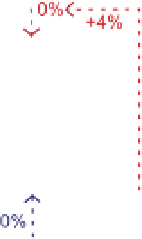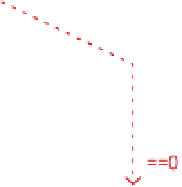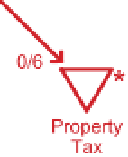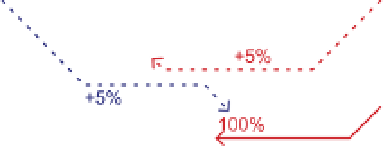Game Development Reference
In-Depth Information
engine
pattern in the game is too dominant. Looking through the design patterns in
Appendix B suggests a solution: By applying
dynamic friction
, the positive feedback
might be kept in check.
We can easily introduce
dynamic friction
by adding a form of property tax (and
indeed property tax, in a different form, does exist in the board game). At certain
intervals, the player loses money based on the number of properties and/or houses
she has. The new construction is represented in
Figure 8.17
. The new property tax
mechanism, a drain off each player's
Money
pool, is shown with thick lines. It drains
some money (initially set to zero) every six time steps. The amount that it drains
goes up as the player collects property and houses; this is controlled by thick-lined
state connections (dotted lines) from the player's
Houses
and
Property
pools to the
label on the resource connection leading to the
Property Tax
drain. The tax rate
shown in the diagram is 6% per house and 30% per property.
FIGURe 8.17
Monopoly
with a prop-
erty tax mechanism
Table 8.2
lists the statistics gathered from simulating the game 1,000 times with dif-
ferent settings for the property tax. Blue was programmed to buy 14 properties, and
red to buy 6. The table exhibits a couple of interesting features. With no taxes, blue
has a clear advantage produced by his larger number of properties. As tax rates go
up, however, blue's advantage decreases. Greater than a certain point, the taxes are
so high that blue's properties are actually a disadvantage to his economic success,
and blue starts to lose more often than he wins. Set correctly, the taxes do indeed
act as dynamic friction, reducing the effect of positive feedback.
Both artificial players are set to purchase property and houses at the earliest available
opportunity, which might not be the best strategy if property taxes are in operation.
They might do better if they played a bit more conservatively.











































